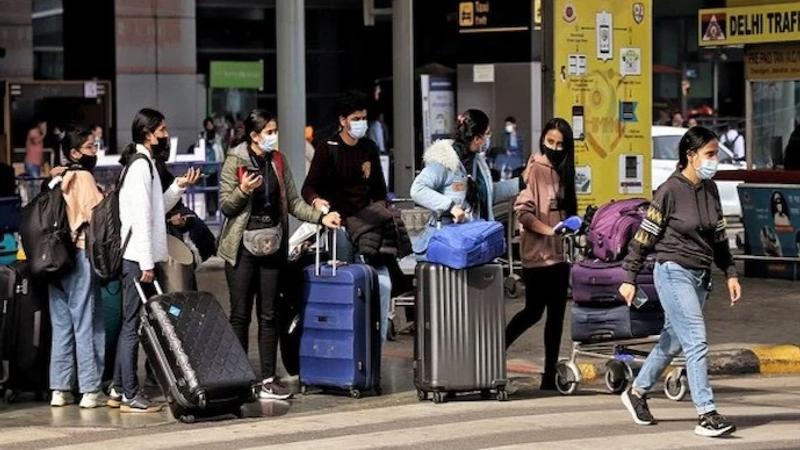Published 15:50 IST, June 19th 2024
The Economic Impact of International Students: Driving 40 Billion Dollars into the US Economy
In 2023 alone, international students injected an estimated $40 billion into the U.S. economy, according to the Institute of International Education.

International students are integral to the fabric of the U.S. higher education system, providing not only cultural diversity but also significant economic contributions. Each year, these students bolster the national economy through their tuition fees and living expenses, playing a crucial role in sustaining the financial health of many U.S. colleges and universities amid budget cuts and declining domestic enrollment. The allure of U.S. higher education, supported by favorable immigration policies, positions the country as a leading global destination, fostering academic excellence and multicultural integration.
However, the U.S. faces growing competition from countries like the UK and Canada, which have emerged as attractive alternatives for international students. To maintain its appeal, particularly amidst recent challenges such as visa uncertainties post-COVID, the U.S. must reinforce its position as the preferred choice over its competitors.
“In 2023 alone, international students injected an estimated $40 billion into the U.S. economy, according to the Institute of International Education. This substantial economic impact extends across multiple sectors, including higher education, real estate, retail, and beyond. Besides paying higher tuition fees than domestic students, international students contribute to local economies through spending on housing, transportation, healthcare, and other living expenses, thereby supporting job creation and local businesses,” Subhakar Alapati, Founder Director, Global Tree Overseas Education Consultants, Hyderabad told Republic World. He further talked about the economic impact of international students on the US economy.
Economic Contributions
The economic significance of international students transcends their financial inputs. Their presence helps sustain numerous jobs within academia and beyond, with approximately three U.S. jobs created or supported for every seven international students. These roles span teaching, administration, and extend into community sectors such as housing, dining, and retail. Moreover, international students stabilize and expand programs, particularly in less popular academic disciplines or smaller institutions.
Furthermore, their diverse backgrounds enrich the academic environment, preparing a globally competent workforce. This cross-cultural exchange stimulates innovation and entrepreneurship on campuses, fostering new ideas and startups that further drive economic growth. Many international graduates contribute to the U.S. workforce post-graduation, particularly in high-demand fields like STEM, addressing critical skill shortages and enhancing America's global competitiveness.
Policy Impact and Future Outlook
The policies governing international student visas and work opportunities play a pivotal role in shaping their influx into the U.S. Recent reforms aimed at streamlining visa processes and expanding Optional Practical Training (OPT) underscore recognition of the economic and cultural dividends of international students. However, policy unpredictability and potential restrictions pose risks that could deter students, undermining the economic benefits they bring.
Policymakers must weigh these economic implications carefully. Facilitating a steady flow of international students is vital for the vitality of U.S. higher education and the broader economy. Balancing security concerns with openness to international talent will be essential in preserving America's leadership in global education and its economic gains from this diverse talent pool.
Moreover, amidst intensifying global competition, the U.S. must proactively enhance its appeal to international students. Addressing visa challenges and improving accessibility will be pivotal in ensuring that the U.S. remains the top choice for higher education. Consistent and supportive policy frameworks are imperative to sustain this competitive edge over other attractive destinations.
The presence of international students in the U.S. is not just beneficial academically but also serves as a crucial economic lifeline. Their contributions foster job creation, innovation, and cultural exchange, enriching educational institutions and the nation as a whole. As global dynamics evolve, adapting policies to welcome and retain international scholars will be essential for the enduring health of U.S. higher education and its economy.
Updated 15:50 IST, June 19th 2024




